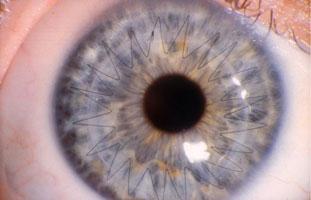Partial-thickness Corneal Transplantation

The cornea is a clear tissue made up of many layers. It is important for it to remain clear in order to allow light to enter the eye. In certain diseases such as Fuchs corneal dystrophy or pseudophakic bullous keratopathy, the innermost layer is injured resulting in a cloudy cornea and decreased vision.
Descemet’s Stripping Endothelial Keratoplasty (DSEK) is one of the latest techniques in corneal transplantation designed specifically for patients with these conditions. DSEK procedure is a partial-thickness corneal transplant that replaces only the innermost layer of the cornea. During DSEK surgery the patient’s diseased endothelial layer is removed and replaced with new endothelial tissue from a healthy donor. This thin piece of tissue is inserted onto the back surface of the patient’s cornea and secured in place. This new surgical technique is a significant improvement over the standard corneal transplantation operation. The surgery itself takes less time with an experienced eye surgeon, involves a smaller surgical incision, requires far fewer stitches, heals faster and more reliably, and the vision returns faster (usually within a few months as compared to 1-2 years for standard corneal transplantation).
Advantages:
- Faster visual recovery time usually in a few months
- Only the thin inner layer of the cornea is replaced and over 90% of the patient’s own cornea remains behind. This leads to the use of fewer stitches and overall greater structural integrity.
- Decreased episodes of graft rejection as there is less foreign tissue used during the surgery as compared to standard corneal transplant surgery.
Disadvantages:
- Technically challenging
- Potential for scarring at graft-host interface
- The main risk is that the thin button of endothelium donor tissue can become displaced within the first few days or weeks after surgery. If this occurs a return trip to the operating room may be required to reposition it. The tissue can often be repositioned without difficulty and is often is all that is needed. The surgery can be repeated if needed and if DSEK fails, a traditional corneal transplant operation can still be performed.











.png)
